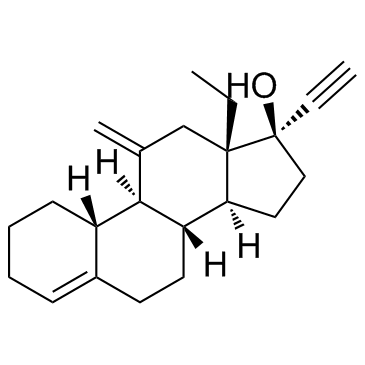Effect of antiretroviral therapy including lopinavir/ritonavir or efavirenz on etonogestrel-releasing implant pharmacokinetics in HIV-positive women.
Carolina S Vieira, Maria V Bahamondes, Roberto M de Souza, Milena B Brito, Tatiana R Rocha Prandini, Eliana Amaral, Luis Bahamondes, Geraldo Duarte, Silvana M Quintana, Carolina Scaranari, Rui A Ferriani
文献索引:J. Acquir. Immune Defic. Syndr. 66(4) , 378-85, (2014)
全文:HTML全文
摘要
Data on the interaction between the etonogestrel (ENG) implant and antiretroviral therapy are lacking. We evaluated the effect of 2 highly active antiretroviral therapy (HAART) regimens (1 including efavirenz and the other ritonavir-boosted lopinavir) on the pharmacokinetic (PK) parameters of an ENG-releasing implant in HIV-positive women.Prospective nonrandomized PK study.Forty-five HIV-positive women who desired to use ENG implants were included: 15 had received zidovudine/lamivudine + lopinavir/ritonavir for ≥3 months (LPV/r-based HAART group), 15 had received zidovudine/lamivudine + efavirenz for ≥3 months (EFV-based HAART group), and 15 had not received HAART (non-HAART group). PK parameters were measured using ultra-performance liquid chromatography-mass spectrometry at baseline and 2, 4, 6, 8, 10, 12, 16, 20, and 24 weeks after implant placement.The EFV-based HAART regimen was associated with a reduction in the bioavailability of ENG, which showed decreases of 63.4%, 53.7%, and 70% in the area under the curve (AUC), maximum concentration (Cmax), and minimum concentration (Cmin) of ENG, respectively, compared with the non-HAART group. The LPV/r-based HAART regimen was associated with an increase in ENG bioavailability, which showed 52%, 60.6%, and 33.8% increases in the ENG AUC, Cmax, and Cmin, respectively, compared with the non-HAART group.The coadministration of EFV decreased the bioavailability of ENG released from the implant, which could impair contraceptive efficacy. However, the coadministration of LPV/r increased the bioavailability of ENG released from the implant, which suggests that this antiretroviral combination does not impair the ENG implant efficacy.
相关化合物
| 结构式 | 名称/CAS号 | 分子式 | 全部文献 |
|---|---|---|---|
 |
去氧孕烯
CAS:54024-22-5 |
C22H30O | |
 |
依托孕烯
CAS:54048-10-1 |
C22H28O2 |
|
Changes in the size of rectovaginal endometriotic nodules in...
2013-03-01 [Arch. Gynecol. Obstet. 287(3) , 447-53, (2013)] |
|
The risk of venous thrombosis in women over 50 years old usi...
2013-01-01 [J. Thromb. Haemost. 11(1) , 124-31, (2013)] |
|
Progestogen-only contraceptive pill compared with combined o...
2014-08-01 [Eur. J. Obstet. Gynecol. Reprod. Biol. 179 , 63-8, (2014)] |
|
Progestins in preventive hormone therapy. Including pharmaco...
2013-10-01 [Obstet. Gynecol. Clin. North Am. 21(2) , 299-319, (1994)] |
|
Pharmacokinetics of the new progestogens and influence of ge...
1997-05-01 [Contraception 55(5) , 273-82, (1997)] |